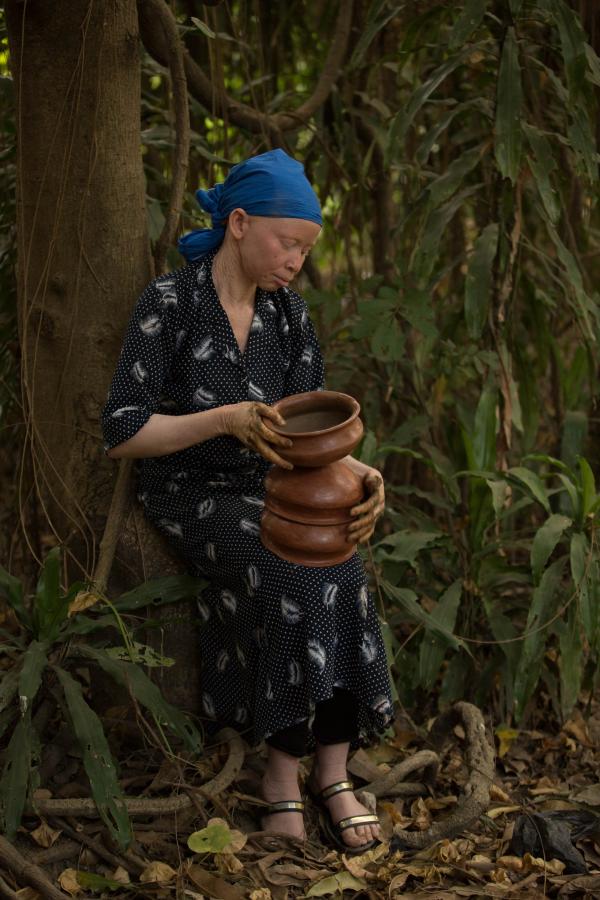It’s the peak of the afternoon in Nyamizeze, Tanzania, and Martha Mganga is in her element.
Better known as Sister Martha, the 54-year-old Rotary community advocate is one of her country’s most prolific campaigners for the rights of people with albinism, the often-misunderstood, inherited condition characterized by abnormally light skin, eyes, and hair, limited vision, and extreme sensitivity to the sun.
Mganga, an albino herself, has spent three decades helping those with the condition get an education, protect themselves from harmful ultraviolet rays, and fight pervasive myths and stigmas, including false beliefs, propagated by rogue witch doctors, that albino body parts can bring good luck or fortune.

Over the last decade, these superstitions have led to a wave of grisly albino killings, dismemberments, and even grave robberies. At least 76 Tanzanian albinos have been murdered; 72 others have survived attacks, often with severe mutilations.
On this day, Mganga is part of a team of facilitators taking part in a Rotary-supported community workshop, convened under a plastic tarp with a small group of elders from this village of about 10,000.
Already, multiple colleagues have addressed those in attendance: mostly male civic and religious leaders, dressed in fraying button-down shirts, who are joined by Nyamizeze’s two albino residents, Happiness Sebastian, 24, and her infant daughter, Keflin.
The discussion, meant to educate locals on albinism’s causes, debunk its many stigmas, and promote the well-being of the albino community,
has already touched on the condition’s genetics, the recent attacks, and the many dehumanizing myths.
Albinism is a curse brought on by evil spirits, one villager says he was taught as a child. It’s the result of an African woman sleeping with a white man, says another. “Albinos do not die,” says a third. “They simply disappear.”
Mganga, speaking toward the end of the session, saves her words for what she believes is the day’s most critical message.
For all the horrors of the killings, she tells the group, albinos face an even greater danger from the sun. Because albinos have low levels of melanin, the pigment that gives skin, hair, and eyes their color, they lack adequate protection from the sun’s ultraviolet rays, a reality that is often deadly in an equatorial country like Tanzania.

Rotary member Faye Cran holds Keflin Clement, daughter of Happiness (left), at a community education event in the Mwanza region.
With many people unaware of proper protection measures, skin cancer rates are alarmingly high. According to Under the Same Sun, a Canadian group that promotes the well-being of albinos around the world, nearly all albinos in Tanzania develop dangerous precancerous lesions by age 20 and many die before age 40. Although life expectancy is on the rise because of increased cancer awareness and better access to treatment, albinos living in remote areas often know little of the sun’s dangers.
Mganga, therefore, lectures the group on the need for those with the condition to continually seek out shade, particularly when the sun’s rays are brightest, and cover up as well as possible — advice that is news to Sebastian, who sits with her legs and arms bare. Leading by example, Mganga shows off her own outfit: a long-sleeved shirt that covers her neck and shoulders, an ankle-length skirt, and a Rotary-emblazoned bucket hat protecting her face and head.
“The sun is our biggest enemy,” she says before the discussion gives way to a performance by local dancers and an educational video that is screened for the entire village. “But there’s no reason so many of us should be dying.”

Leave A Comment
You must be logged in to post a comment.